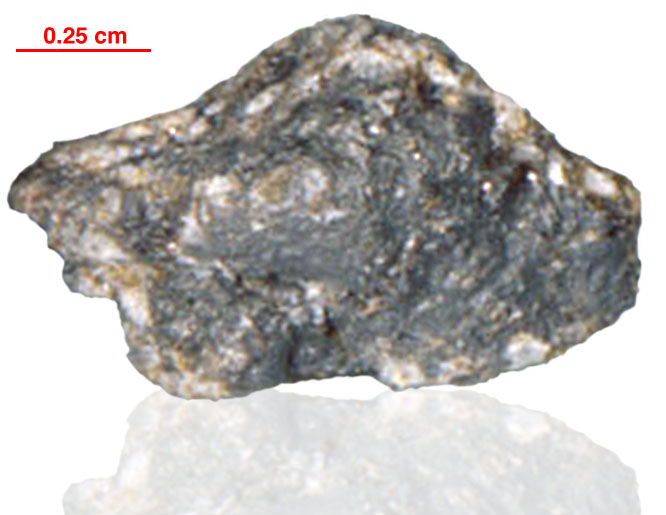
Fact sheet
70148 is a medium grey, subangular, high-Ti mare basalt with no cavities that was collected from a basaltic boulder named the "Geophone Rock". This basalt contains interstitial, anhedral, and blocky ilmenite set in plagioclase and pyroxene. Rutile and chromite exsolution lamellae are present in ilmenite. Olivine is found as inclusions in plagioclase: Rare, discrete chromite-ulvospinel grains are present in pyroxene and ilmenite-free armalcolite within plagioclase or pyroxene. Anhedral troilite, metallic iron, and silica are interstitial phases. Pyroxene compositions range from pigeonite to titan-augite. Rotation 1 shows cristobalite adjacent to a zoned pyroxene crystal. More zoned (and shocked) pyroxene appears in rotation 2.
The sample weighed 0.92 grams before analysis and has not been dated.
Further details of this and other Apollo samples are here: http://curator.jsc.nasa.gov/lunar/
Apollo 17, the final manned landing mission, had two objectives: to obtain samples of ancient rocks from the lunar highlands and to look for evidence of younger volcanic activity on the valley floor.
This small Collection contains material deriving from both periods, including igneous rocks around 4.3 billion years old from the lunar highlands as well as younger volcanic samples dating from about 3.6 billion years ago.
Apollo 17 was launched on 7 December 1972.






